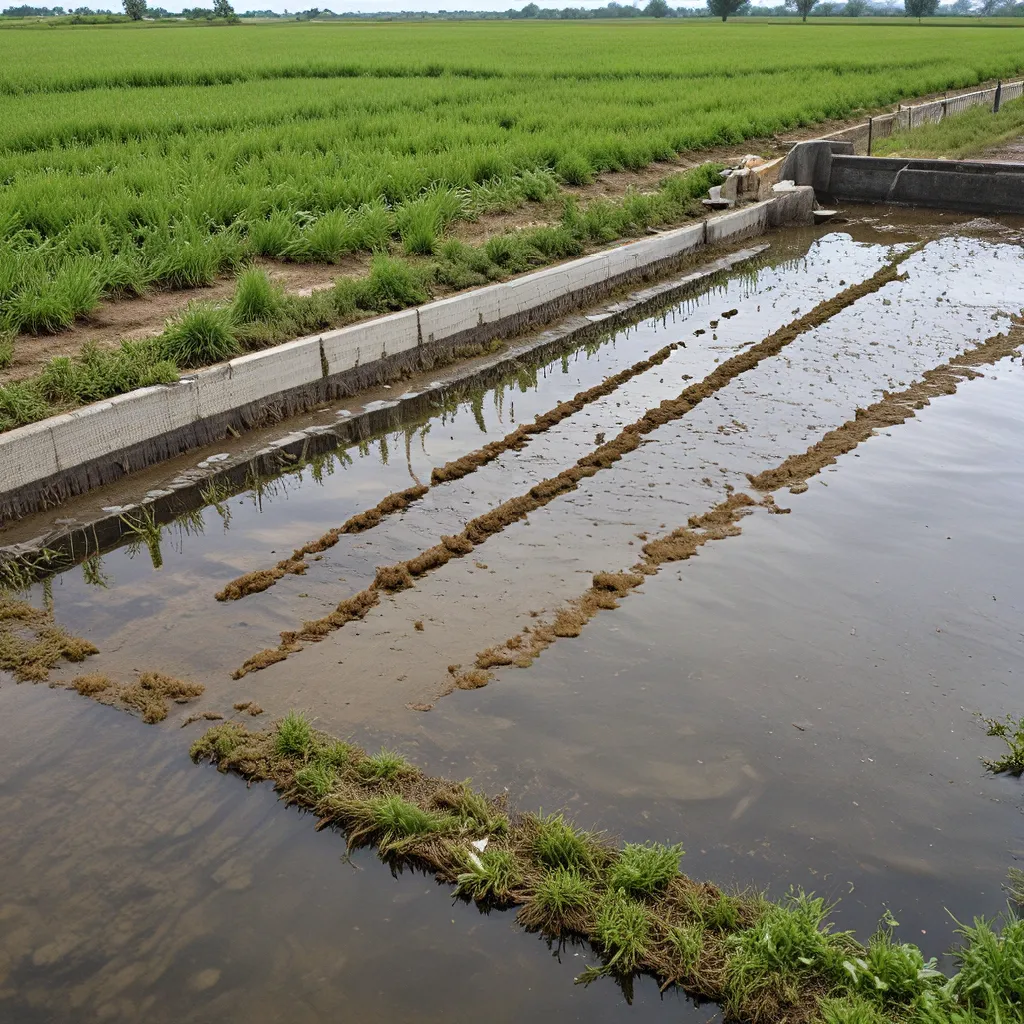
In the grand scheme of things, it’s easy to overlook the unsung heroes of our modern world – the countless systems and processes that keep our cities running and our crops growing. But when you start to dive into the complexities of wastewater treatment, you realize just how crucial and multifaceted this often-overlooked industry truly is.
Reclaiming the Riches in our Wastewater
I’ll be the first to admit that wastewater treatment doesn’t exactly scream “excitement” or “innovation” – it’s the kind of behind-the-scenes work that most people take for granted. But that’s exactly why I find it so fascinating. Because when you peel back the layers, you start to uncover a world of untapped potential.
Consider this: every day, our wastewater treatment plants are processing an endless stream of nutrient-rich effluent, flushing away valuable resources like nitrogen and phosphorus. These are the very same nutrients that farmers rely on to grow our food – and yet, we’ve been treating them like waste. It’s a classic case of throwing the baby out with the bathwater.
But what if I told you that there’s a way to recapture these valuable nutrients and repurpose them for sustainable agriculture? Enter the world of nutrient recovery – a cutting-edge field that’s poised to revolutionize the way we manage our water resources.
Unlocking the Potential of Nutrient Recovery
At the heart of nutrient recovery is the idea that wastewater should be seen as a resource, not just a waste product. Thanks to innovative technologies like high-performance filtration membranes, we now have the ability to selectively extract and purify the essential nutrients from wastewater streams.
Groundbreaking research at institutions like the Georgia Institute of Technology has demonstrated the immense potential of these membrane-based systems. By using machine learning to optimize the design and performance of these filtration membranes, researchers have been able to achieve remarkable results – separating out contaminants like polyfluoroalkyl substances while recovering valuable nutrients like nitrogen, phosphorus, and potassium.
But the benefits of nutrient recovery don’t stop there. By transforming these reclaimed nutrients into a usable, high-quality form, we can effectively replace the energy-intensive and environmentally-harmful production of synthetic fertilizers. Suddenly, our wastewater isn’t just a problem to be dealt with – it’s a goldmine of sustainable agricultural solutions.
Closing the Loop on Nutrient Cycles
The implications of this are truly profound. Imagine a world where the nutrients that sustain our crops are continuously recycled, rather than extracted from finite mineral sources and pumped into the environment. This is the promise of sustainable agriculture – a closed-loop system where waste becomes resource, and the natural cycles of our planet are honored rather than disrupted.
Companies like NPHarvest are already leading the charge, developing innovative nutrient recovery technologies that can be seamlessly integrated into existing wastewater treatment infrastructure. By capturing these valuable nutrients and repurposing them for agricultural use, they’re not only reducing the strain on our natural resources, but also closing the loop on essential nutrient cycles.
But the true beauty of nutrient recovery lies in its versatility. These reclaimed nutrients can be used not just for traditional agriculture, but also in hydroponics, precision farming, and even urban gardening. Imagine a future where our cities are powered by a decentralized network of nutrient-rich water sources, feeding a thriving ecosystem of local food production.
The Sustainable Future of Water Management
As I delve deeper into this topic, I can’t help but feel a sense of excitement and optimism. The potential for nutrient recovery to transform our approach to water management is truly breathtaking. By partnering with forward-thinking wastewater treatment providers, we can unlock a future where the water cycle is not just a linear process, but a regenerative system that nourishes our land, our communities, and our planet as a whole.
Of course, the path to this sustainable future is not without its challenges. There are complex technical, economic, and regulatory hurdles to overcome. But I firmly believe that with the right innovative mindset, the collaborative spirit, and the unwavering commitment to environmental stewardship, we can overcome these obstacles and rewrite the narrative of wastewater treatment.
So, let’s raise a glass (of purified, nutrient-rich water, of course) to the unsung heroes of our water infrastructure. Because when we unlock the true potential of nutrient recovery, we’re not just solving a problem – we’re paving the way for a more sustainable, resilient, and abundant future.